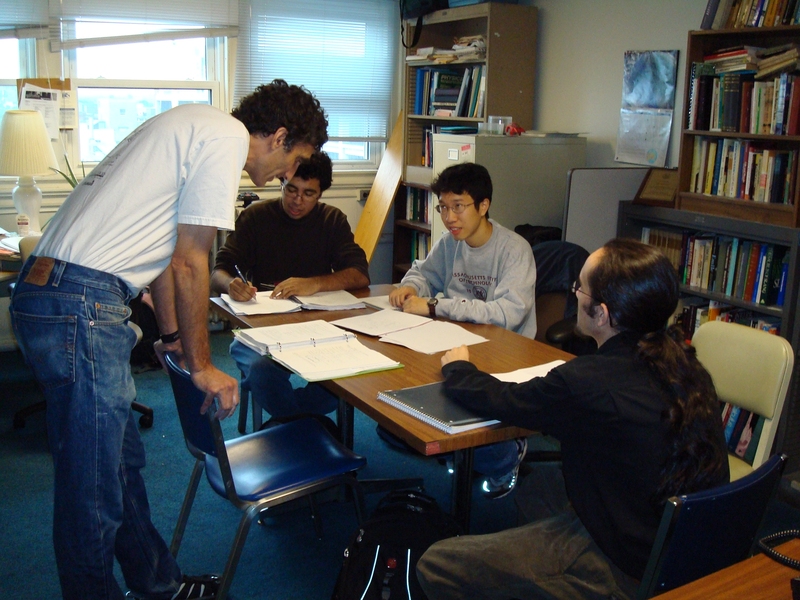This is the third in a series of articles from the Office of the Dean for Undergraduate Education (DUE) that answers the questions: What does that office really do? Who works there? And how does the office advance/impact education at MIT?
[On July 1, 2010, ESG joined DUE as part of the Office of Experiential Learning]
If you travel to the sixth floor of Building 24, you will find a unique freshman learning community. Instead of lecture halls, you will find small, informal classrooms. The common space, which includes couches, a hammock and a kitchen, encourages students to gather and discuss ideas, work through challenges, and connect as a community. The environment fosters frequent interaction between students, faculty and staff both inside and outside the classroom. This is the home of the Experimental Study Group (ESG).
Experimental Study Group (ESG): A dynamic educational community
Each year, 50 freshmen enroll in ESG’s alternative academic program that offers a more personalized approach to the core freshman subjects. What exactly does that mean? It means that ESG students take the same subjects as their mainstream peers, such as 18.01, 8.01 or a HASS subject, but they do so in a learning environment where:
Read the full article from the July 2010 DUE newsletter
[On July 1, 2010, ESG joined DUE as part of the Office of Experiential Learning]
If you travel to the sixth floor of Building 24, you will find a unique freshman learning community. Instead of lecture halls, you will find small, informal classrooms. The common space, which includes couches, a hammock and a kitchen, encourages students to gather and discuss ideas, work through challenges, and connect as a community. The environment fosters frequent interaction between students, faculty and staff both inside and outside the classroom. This is the home of the Experimental Study Group (ESG).
Experimental Study Group (ESG): A dynamic educational community
Each year, 50 freshmen enroll in ESG’s alternative academic program that offers a more personalized approach to the core freshman subjects. What exactly does that mean? It means that ESG students take the same subjects as their mainstream peers, such as 18.01, 8.01 or a HASS subject, but they do so in a learning environment where:
- Class size = 5-10 students;
- Classes are highly interactive;
- Students influence the pace of the classes;
- Teaching is the priority
Read the full article from the July 2010 DUE newsletter






